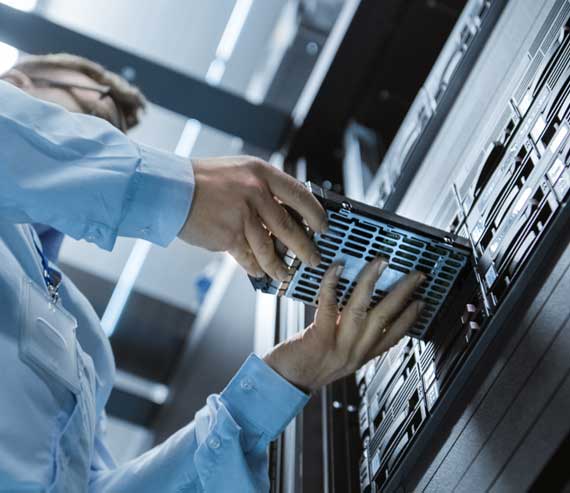The digital universe is rapidly expanding, doubling every two years. With the explosion of data, every company of each size must implement an effective data storage solution, and the solution includes NAS and SAN. NAS stands for Network Attached Storage, whereas SAN stands for Storage Area Network. Basically, both of the technologies are electronic storage that stow data for your infrastructure.
Differentiating between SAN and NAS
SAN and NAS are tried and accurate methods for adding enterprise excellent storage capacity. Both of the network storage serves different purposes with unique benefits and drawbacks. Usually, SAN and NAS hinge on deciding what type of room one wants in their system. SAN works best with structured data, whereas NAS works on unstructured. As a fact, SAN connects over fabric channel technology; the data access and transfer are faster compared to NAS. Alternatively, NAS wins over data backup and NAS data recovery peculiarity.
SAN
As in Storage Area Network, SAN has traditionally some controllers and a bunch of disks that give a modular option to add storage. It is a specialized, vast speed and high availability network that uses fiber channel technology to connect to storage disks. SAN is physically connected to the Node, which is a server or library sort of environment.
Pros of SAN
- Storage on SAN is easily accessible by multiple servers at a time around the globe, and they are fast processing.
- SAN eliminates interlude as the components are hot-swappable manually.
- SAN allows to dynamically pull the required storage by servers that eliminate time to allocate spaces manually.
Cons of SAN
- SAN cannot handle high traffic in the network, and it’s appropriate for low data traffic.
- Since the network is shared between the client computers, thus it is not an excellent choice to store sensitive data on it.
NAS
As in Network Attached Storage, NAS suggests it is a storage piece attached to the network via Ethernet, other network cable or wireless device, and connects over TCP/IP network. NAS can have different configurations like it can have multiple hard disks, can be set up for redundancy and disk setup in various types of the RAID group. With NAS, you are using standard file transfer protocol to interact with the data. You can use NAS to share the storage sitting on it with the entire network in a nutshell.
Pros of NAS
- NAS takes advantage of having access to data anywhere in the world as it comes with its cloud services.
- The idea inherited in NAS is ideally easy to use, and it’s even flexible for data recovery over LAN networks.
- NAS has a cost advantage over other typical servers. It hints that you can expand the server’s storage with minimum cost possible to boost your business.
Cons of NAS
- The power failure in the server may affect your server’s data with NAS as its fully electronic controlled.
- NAS data recovery and backup use additional cost.
- NAS is not straightforward to use as it’s entirely based on the Linux Operating system. Restoration and maintenance require professionals throughout these circumstances.
